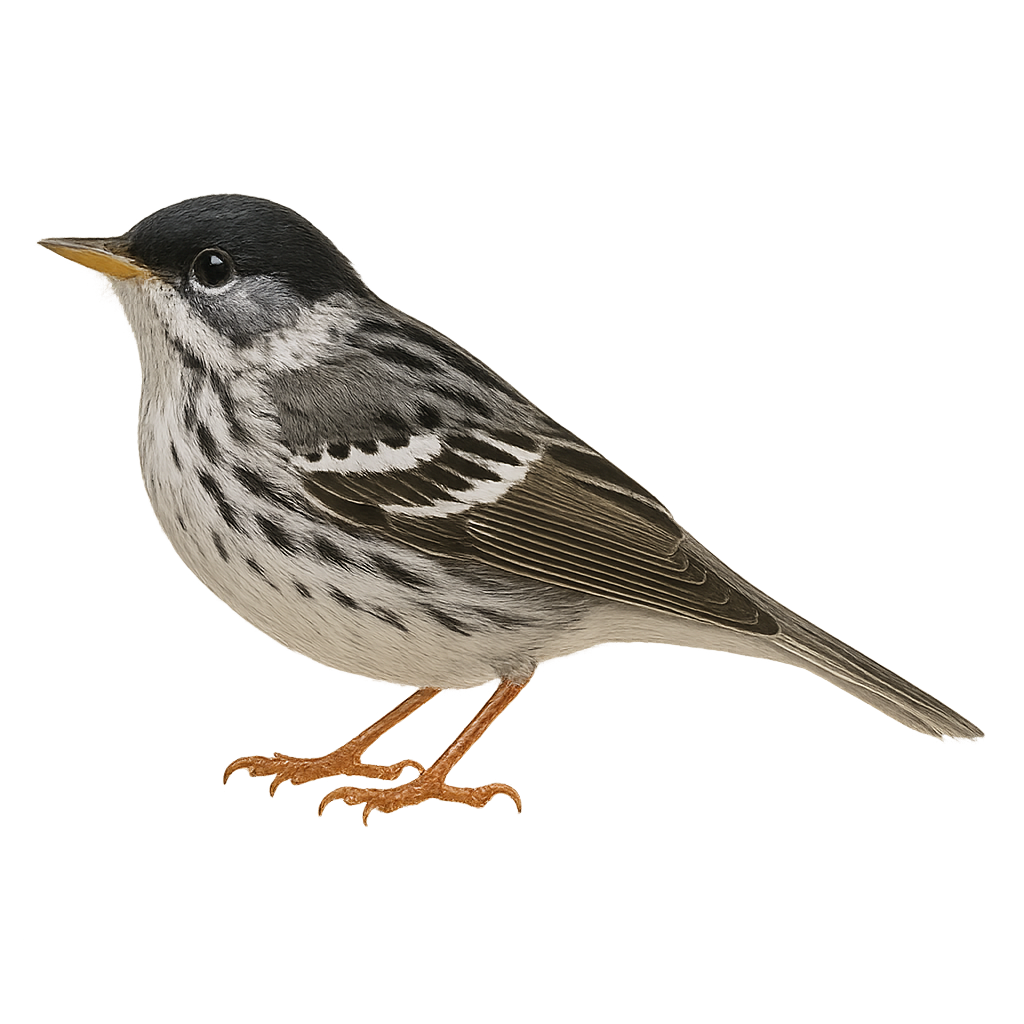Your wildlife photography guide.
Explore the blackpoll warbler in detail, study its behavior, prepare your shots.
Where to observe and photograph the blackpoll warbler in the wild
Learn where and when to spot the blackpoll warbler in the wild, how to identify the species based on distinctive features, and what natural environments it inhabits. The WildlifePhotographer app offers tailored photography tips that reflect the blackpoll warbler’s behavior, helping you capture better wildlife images. Explore the full species profile for key information including description, habitat, active periods, and approach techniques.
Blackpoll Warbler
Scientific name: Setophaga striata

IUCN Status: Least Concern
Family: PARULIDAE
Group: Birds
Sensitivity to human approach: Suspicious
Minimum approach distance: 10 m
Courtship display: June to July
Incubation: 11-13 jours
Hatchings: June to July
Habitat:
Boreal forests, wetlands, taiga
Activity period :
Primarily active during the day, with peak activity in the morning and late afternoon.
Identification and description:
The Blackpoll Warbler, Setophaga striata, is a small songbird in the Parulidae family. It is easily identified by its distinctive plumage: males have a black cap, white cheeks, and black streaks on their back. Females and juveniles are duller, with olive tones and less pronounced streaking. This migratory species travels long distances between its breeding grounds in the boreal forests of North America and its wintering areas in South America. It primarily feeds on insects, which it catches by flitting through foliage. The Blackpoll Warbler is known for its melodious song and high-pitched calls. Although its conservation status is concerning due to habitat loss, it remains relatively common within its range.
Recommended lens:
400 mm – adjust based on distance, desired framing (portrait or habitat), and approach conditions.
Photography tips:
To photograph the Blackpoll Warbler, focus on boreal forests or wetlands during migration. Use a 400mm or longer telephoto lens to capture details without disturbing the bird. Be patient and discreet, as this species can be suspicious. Listen for its song to locate its position. Natural morning or afternoon light is ideal for highlighting its plumage colors. Avoid sudden movements and maintain a safe distance of at least 10 m to prevent scaring it away.
The WildlifePhotographer App is coming soon!
Be the first to explore the best nature spots, track rutting seasons, log your observations, and observe more wildlife.
Already 1 430 wildlife lovers subscribed worldwide

